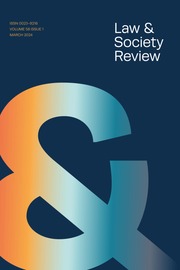No CrossRef data available.
Article contents
The world in a court: how the International Court of Justice’s organizational practices promote stability in a contested field
Published online by Cambridge University Press: 10 February 2025
Abstract
The International Court of Justice (ICJ), often referred to as the “World Court,” plays a central role in the field of international law. Despite the significance of this court, socio-legal scholarship has not examined the ICJ’s inner workings due to limited access. Drawing from field theory and organizational theory, this study addresses this gap by using various data sources including interviews, organizational documents, and publicly available texts from insiders. Based on this data, this article explores how the ICJ’s institutional context shapes its organization and the experiences of its actors. We argue that the ICJ provides a space that tightly connects institutional myths, organizational practices, and individual action. This tight coupling effectively mediates and manages differences among ICJ actors, fostering a stable practice of international law within a field otherwise marked by conflict. This enables the ICJ to produce and sustain a specific way of doing international law which has stabilizing effects in this field. By linking the macro level of the field – an area emphasized in prior scholarship – with a microlevel organizational perspective, this article offers a nuanced understanding of the conflicts and organizational practices influencing the ICJ’s operations and development of international law.
Keywords
- Type
- Article
- Information
- Copyright
- © The Author(s), 2025. Published by Cambridge University Press on behalf of Law and Society Association.



